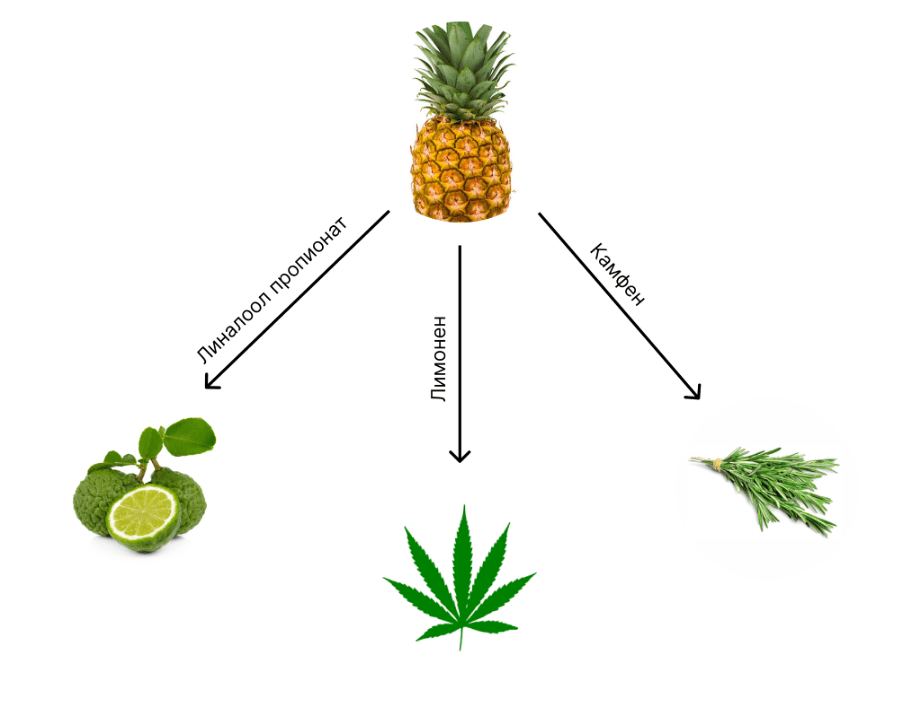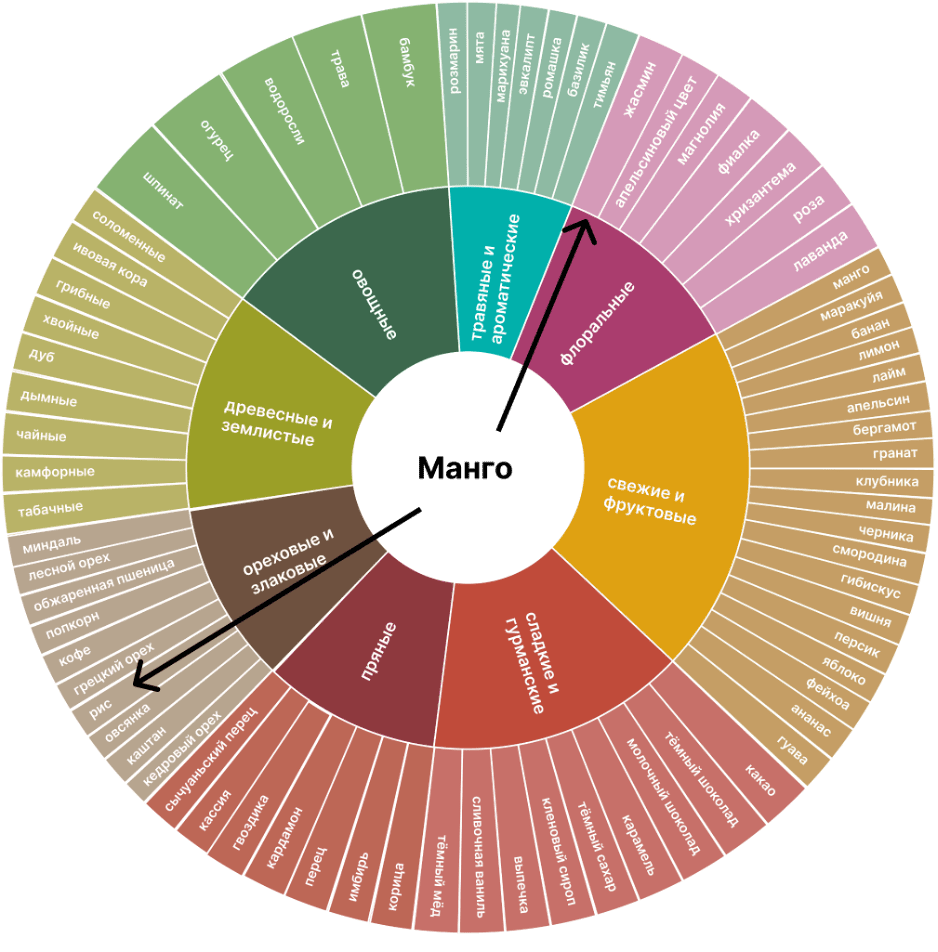Welcome to the world of CODE cordial flavors and aromas, where our mixologists work tirelessly to create unique combinations that will impress your taste buds!
CODE cordials have appeared on the market not long ago, but have already received many rave reviews, as well as increased interest in the flavors presented in the line.
Below you will get an insight into the creative process behind the development of CODE's four flagship cordials:
- Fukumoto Orange / French Vanilla / Salt,
- Rhubarb / Raspberry / Sicilian Lemon,
- Blackcurrant / Pineapple Express / Lavender;
- Lemon Crumble.
Our chief mixologist will talk about how cordials are created, what serves as inspiration when developing flavor combinations, what the structure of the composition consists of, how to use the “Wheel of Flavors” and answer the most popular question from customers: “Why these particular flavors?”
We hope this article not only provides a deeper understanding of CODE cordials, but also inspires you to try new and exciting flavor combinations in your own beverage experiments.
So, over to the chief mixologist!
CODE Cordial Concept
Work on cordial (and any other product) begins with a concept, which largely depends on the sources of inspiration. Explaining how inspiration works is quite a difficult task. For each person this process is unique and inimitable. I will just name the sources that I use most often: music (phonk, synthwave), video games, fiction.

Sources of inspiration are always very individual - the main thing is that they give an emotional response.
To pack all the selected themes and references into a single concept, you need to decide on the direction of the composition.
For convenience, the direction can be divided into two main parts:
- geographical division - Eastern, Asian or Nordic,
- profile – aperitif, refreshing or spicy.
Next, I determine what alcoholic beverages the cordial will be used for and who the target consumer is (demographics such as gender and age). An abstract concept for an abstract cordial might look like this: a light fruity drink with a Pan-Asian twist and a pronounced floral part, mainly for girls, to be mixed with sparkling wine.
Structure
As a clear example of constructing the structure of a composition, you can use the olfactory pyramid. The pyramidal architecture of the composition is used mainly in perfumery.
The main principle here is that all the components of a perfume composition can be divided into 3 parts:
- top notes,
- heart notes,
- base notes.
The top notes are formed by the most volatile substances, as a result of which they sound as intense as possible, but not for long. The “volatility” of substances is determined by their low molecular weight - the lower it is, the faster the substance evaporates and reaches our olfactory receptors.
The heart is the main “filling” of the composition, which creates the whole meaning. It is this that determines the character of the composition. The aromatic substances that form the heart are heavier than the top notes, so they take longer to evaporate.
The base notes are the heaviest. They are mainly of a utilitarian nature, since, due to their durability, they can extend the life of the entire composition. The length of the train also depends on them.

Comparing perfumes with drinks, of course, is not entirely correct - primarily due to the difference in the perception of aromas.
When assessing odors from the outside with our nose, we use the orthonasal sense of smell, and when chewing and swallowing food and drinks, we use the retronasal sense of smell. Moreover, at the moment of swallowing, retronasal perception is felt most acutely.
Unlike perfumery, the notes of the aromatic composition of a drink are not divided by “activation time”, but are felt as a single bouquet, in which the aftertaste and aftertaste are distinguished separately. That is, we simultaneously perceive the entire aromatic bouquet, only the light substances that make up the taste are detected a little earlier, and the heavy substances a little longer (or much longer).
The aroma compounds that form the aftertaste are the heaviest molecules and the least soluble in water. In order for a person to perceive the aroma when drinking a drink retronasally, the aroma molecule must evaporate and reach the olfactory receptors of the nasal cavity.
A heavy molecule will take much longer to transition from liquidof solvent (drink) into an aerosol.

Molecules that are poorly soluble or not at all soluble in water also leave a long aftertaste. Often these substances are dissolved in fats and oils, which, after swallowing, cover the oral cavity with a thin membrane. This shell gradually releases heavy aromatic substances, which then gradually dissolve in saliva and reach the olfactory receptors in the form of an aerosol.
Substances that leave an aftertaste are usually the same as those used in the perfume base. But substances that are poorly soluble in water also leave a long aftertaste. For example, Maillard reaction products (in roasted coffee and popcorn), natural oil flavors and extracts (citrus, pine, cinnamon, clove), menthol and its derivatives.
As a rule, the first aromatic component I choose is the one that will make up the aftertaste. This is due to the fact that when adding subsequent layers, the result is more predictable.
Mixology
One of the basic principles of mixology is the molecular compatibility of components . This means that in order to form a successful combination, the selected components must contain either the same aromatic substances or structurally similar ones.
For example, pineapple contains both a fruity tropical part and pine notes, part of which are pine terpenes (pinenes).
Terpenes are a wide range of aromatic substances that make up a significant part of the aroma of conifers, citrus fruits, marijuana, as well as many camphor plants (lavender, rosemary, thyme, basil, bay).
Accordingly, pineapple will pair well with most terpene-containing ingredients.

Our brain is designed in such a way that all complex and non-standard things seem attractive to it. Therefore, for most people, a combination of, for example, strawberries and kiwi seems tastier than the same products separately.
The reason is that our brain loves associations. When faced with something new (in our case, a scent), he will compare the object from all sides with everything previously known and familiar.
By the way, many residents of northern countries, when trying mango for the first time (especially not very ripe), note that it looks like a sweet boiled carrot with fiber.
Our brain has the ability to remember aromas, associating them with a specific situation, product, period of life in which we actively felt them.
For example, if you ask an Englishman what tea smells like, the answer will very rarely not include bergamot or jasmine. And if bergamot and tea have several common nuances (bitterness, astringency, woodiness), then jasmine and tea have even fewer of them. The fact is that people drink tea with bergamot and jasmine, and this association is firmly fixed in their minds.
Another example - just combine cinnamon and cloves - the brain itself will complete this pairing into mulled wine, it is not even necessary to add wine or orange.
And yet, each person’s set of associations is unique, as are his taste and olfactory receptors (number, density, sensitivity). In order to introduce uniform standards for evaluating products with complex aromas (coffee, wine, beer, whiskey, tea, cocoa), the “Flavour Wheel” was invented - a pie chart used to analyze by descriptors (universal units of evaluation). aroma) of the products being tasted.

I use the “Wheel of Flavors” to easily visualize possible combinations. For example, if I need to choose a combination of ripe mango for a composition with a panasian twist (mainly for girls, for mixing with light alcohol), then I will most likely choose jasmine, and rice or pandan as a base.

Fruits, berries, vegetables and other vegetation have one interesting feature - fruits with similar colors have quite a lot in common in their aromatic profile. For example, yellow cherry has a more citrusy, tropical flavor, while yellow tomato is reminiscent of apricot.
Once the components have been selected, all that remains is to formulate them into a composition, apply them to the cordial base (sugar + organic acids) and balance the sour and sweet parts.
It should be borne in mind that in some cases acids can enhance the sound of some notes and weaken others.
Now let’s look at the whole process using the example of Blackcurrant / Pineapple Express / Lavender cordial.
s/blog/img/mixology7.png?_t=1682696611" />
The original goal was to make a berry-pine mix to be mixed primarily with gin. I decided to use marijuana as a pine base because, unlike straight pine needles, it has a much more complex and complex aromatics with fruity nuances. The choice was inspired by the movie “Pineapple Express”.
When putting together my fantasy version of Pineapple Express, I used the aromas of fresh tarragon (responsible for the juicy green part), sour rhubarb (imitates the specific woody-citrus aspects of marijuana) and ripe pineapple (provides juiciness, adds complexity to the needles). Then I added blackcurrant aromatics (which darkens the composition, gives it weight and fills the small gap between the aftertaste and the aftertaste).
Next, all that was left was to add a link between Pineapple Express and blackcurrant. Lavender was the perfect choice. Its dryness pairs well with the citrusy aspects of currants, and the moderate camphority adds interesting detail to the pine side.
Afterword
The work of a mixologist is incredibly complex and exciting!
It was all the more interesting for us to lift the veil of mystery about the origin of CODE cordials!
We hope this article was helpful and inspired you to experiment with cordial in your drinks yourself.
In the near future, the brand’s assortment will be replenished with new original flavors, the inspiration for which is still kept secret.
Author of the article: Thomas Raby, leading mixologist of the Pinch&Drop and CODE brands
















































/https%3A%2F%2Fcomplexbar.com%2Fimages%2Fblog%2F132%2Fmixology8.jpg)
/https%3A%2F%2Fcomplexbar.com%2Fimages%2Fblog%2F246%2Fsirop_scale_2400.jpeg)
/https%3A%2F%2Fcomplexbar.com%2Fimages%2Fblog%2F246%2Fkofe-vostochniy.jpg)
/https%3A%2F%2Fcomplexbar.com%2Fimages%2Fblog%2F245%2Fpexels-jason-villanueva-851555.jpg)
/https%3A%2F%2Fcomplexbar.com%2Fimages%2Fblog%2F246%2F2024-04-09_17.22.54.jpg)
/https%3A%2F%2Fcomplexbar.com%2Fimages%2Fblog%2F246%2F2024-04-09_17.22.47.jpg)
/https%3A%2F%2Fcomplexbar.com%2Fimages%2Fblog%2F246%2FCODE_anons_foamydrops_752%D1%85480_eng.jpg)
/https%3A%2F%2Fcomplexbar.com%2Fimages%2Fblog%2F246%2FAlina_752%D1%85480_eng.jpg)
/https%3A%2F%2Fcomplexbar.com%2Fimages%2Fblog%2F246%2F2024-04-09_17.23.22.jpg)
/https%3A%2F%2Fcomplexbar.com%2Fimages%2Fblog%2F246%2F2024-04-09_17.23.28.jpg)
/https%3A%2F%2Fcomplexbar.com%2Fimages%2Fblog%2F246%2F2024-04-09_17.23.35.jpg)
/https%3A%2F%2Fcomplexbar.com%2Fimages%2Fblog%2F246%2Fdrinksome_752%D1%85480_eng.jpg)
/https%3A%2F%2Fcomplexbar.com%2Fimages%2Fblog%2F246%2Fnude_752%D1%85480_eng.jpg)
/https%3A%2F%2Fcomplexbar.com%2Fimages%2Fblog%2F246%2F752%D1%85480_eng__1_.jpg)
/https%3A%2F%2Fcomplexbar.com%2Fimages%2Fblog%2F246%2F752%D1%85480_eng.jpg)
/https%3A%2F%2Fcomplexbar.com%2Fimages%2Fblog%2F246%2FStudioRaw_752%D1%85480_eng.jpg)
/https%3A%2F%2Fcomplexbar.com%2Fimages%2Fblog%2F246%2FDoppio_tea_752%D1%85480_eng.jpg)
/https%3A%2F%2Fcomplexbar.com%2Fimages%2Fblog%2F246%2FTognana_Stars_Stripes_752%D1%85480_eng.jpg)
/https%3A%2F%2Fcomplexbar.com%2Fimages%2Fblog%2F246%2FRona_752%D1%85480_eng.jpg)
/https%3A%2F%2Fcomplexbar.com%2Fimages%2Fblog%2F246%2FDoppio_vending_752%D1%85480_eng.jpg)
/https%3A%2F%2Fcomplexbar.com%2Fimages%2Fblog%2F246%2FEssence_sukhie_smesi_752%D1%85480_eng.jpg)
/https%3A%2F%2Fcomplexbar.com%2Fimages%2Fblog%2F246%2FODK_sukhie_smesi752%D1%85480_eng.jpg)
/https%3A%2F%2Fcomplexbar.com%2Fimages%2Fblog%2F246%2Funiforma-barmena.jpg)
/https%3A%2F%2Fcomplexbar.com%2Fimages%2Fblog%2F246%2Fkak-nanyat-barmena.jpg)
/https%3A%2F%2Fcomplexbar.com%2Fimages%2Fblog%2F246%2Fsirop_scale_2400.jpeg)
/https%3A%2F%2Fcomplexbar.com%2Fimages%2Fblog%2F246%2FPeugeot_Anons_Paris_U%27Select_Line_Daman_752%D1%85480_eng.jpg)
/https%3A%2F%2Fcomplexbar.com%2Fimages%2Fblog%2F246%2Fkofe-vostochniy.jpg)
/https%3A%2F%2Fcomplexbar.com%2Fimages%2Fblog%2F246%2FMadler.jpg)
/https%3A%2F%2Fcomplexbar.com%2Fimages%2Fblog%2F246%2Fprofbartender_glavn.jpeg)